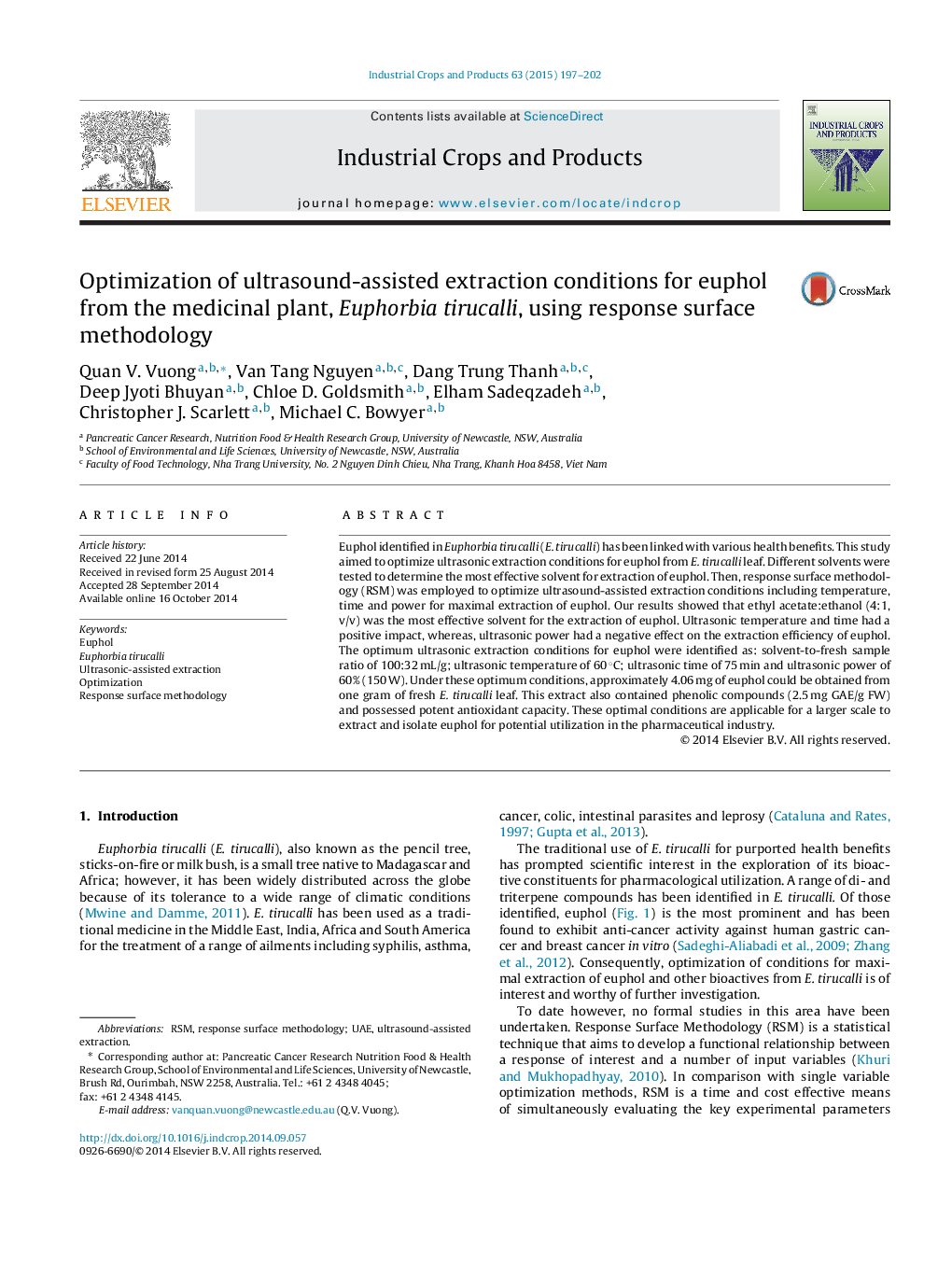| Article ID | Journal | Published Year | Pages | File Type |
|---|---|---|---|---|
| 4513260 | Industrial Crops and Products | 2015 | 6 Pages |
•Euphol is a major compound in Euphorbia tirucalli, and is linked with health benefits.•Solvents, ultrasonic temperature, time, power significantly affected euphol extractability.•Solvent ratio of ethyl acetate:ethanol (4:1, v/v) was the most effective for the extraction of euphol from E. tirucalli.•Higher temperature/time, or lower power resulted in higher extractability of euphol.•Optimal ultrasonic conditions for euphol extraction: 60 °C, 75 min and 150 W.
Euphol identified in Euphorbia tirucalli (E. tirucalli) has been linked with various health benefits. This study aimed to optimize ultrasonic extraction conditions for euphol from E. tirucalli leaf. Different solvents were tested to determine the most effective solvent for extraction of euphol. Then, response surface methodology (RSM) was employed to optimize ultrasound-assisted extraction conditions including temperature, time and power for maximal extraction of euphol. Our results showed that ethyl acetate:ethanol (4:1, v/v) was the most effective solvent for the extraction of euphol. Ultrasonic temperature and time had a positive impact, whereas, ultrasonic power had a negative effect on the extraction efficiency of euphol. The optimum ultrasonic extraction conditions for euphol were identified as: solvent-to-fresh sample ratio of 100:32 mL/g; ultrasonic temperature of 60 °C; ultrasonic time of 75 min and ultrasonic power of 60% (150 W). Under these optimum conditions, approximately 4.06 mg of euphol could be obtained from one gram of fresh E. tirucalli leaf. This extract also contained phenolic compounds (2.5 mg GAE/g FW) and possessed potent antioxidant capacity. These optimal conditions are applicable for a larger scale to extract and isolate euphol for potential utilization in the pharmaceutical industry.
